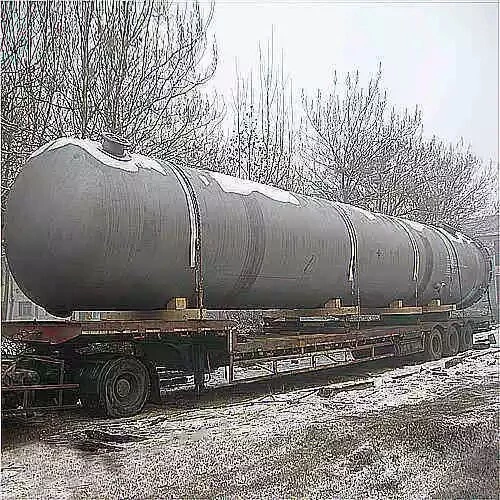Comprehensive Pressure Vessel Inspection Guidelines

This concise guide outlines crucial aspects of pressure vessel inspection, including external and structural assessments, geometric dimensions, surface defects, wall thickness measurements, material analysis, coating layer inspections, welding seam hidden defects, and scrutiny of safety accessories and fasteners. Follow these essential guidelines to ensure thorough and reliable inspections, contributing to the longevity and reliability of pressure vessel operations.
1. External Inspection: Ensuring Pressure Vessel Integrity
- Thoroughly examine the pressure vessel for cracks, overheating, deformation, and any signs of leakage in the body, surface, and welded joints.
- Conduct a detailed inspection of the outer surface, looking for corrosion, damage to insulation layers, peeling, and indications of moisture or cooled-air loss. Additionally, assess abnormal vibrations, noise, and friction in adjacent pipes or components.
- Inspect the bearing and supporting elements, checking for damage, foundation sinking, tilting, cracking, and ensuring the tightness of bolts.
- Verify the compliance of safety accessories with specified requirements, including the assessment of seal performance checking holes for liquid and gas leakage.
2. Structural Inspection: Unveiling the Framework of Strength
- Evaluate the connection, corner joint, lap joint, and welding of the cylindrical shell and shell cover.
- Inspect square holes, manholes, inspection holes, and their reinforcements.
- Assess the condition of the shell cover, bearing, supporting structures, flange, and drainage outlet.
- Ensure the structural integrity and functionality of safety accessories.
3. Geometric Dimension Inspection: Precision in Every Angle
- Measure and assess the amount of misalignment in longitudinal and circumferential welds, the angle of edges and corners, weld reinforcement, fillet weld thickness, and the size and arrangement of weld angles and seams.
- Evaluate the maximum and minimum diameter on the same section, shell cover surface, straight edge height, longitudinal wrinkles, unequal plate thickness (forging), and joint situations.
- Check the verticality of vertical pressure vessels and spherical pressure vessel struts.
- Examine the gap between adjacent steel strips of ribbon-wound pressure vessels.
4. Surface Defect Inspection: Detecting Imperfections with Precision
- Measure and record the depth, diameter, length, and distribution of corrosion and mechanical damage. Investigate the reasons behind abnormal corrosion.
- Inspect the weld on the inner surface, focusing on material strength, welding material, and potential stress corrosion situations. If cracks are found, adjust the percentage of surface flaw detection accordingly.
- Pay special attention to stress concentration parts, deformation areas, dissimilar steel welding points, work fixture welding traces, arc damage, and potential crack-prone regions.
- Utilize metallographic examination or hammering inspection to identify intergranular corrosion tendencies. Perform surface crack inspection at the start and end welded joints of ribbon-type pressure vessels.
- Check other materials sensitive to welding for possible weld cracks.
5. Wall Thickness Measurement: Beyond the Surface into Substance
- Select representative measurement points considering liquid level fluctuation, corrosion susceptibility, manufacturing characteristics, and areas identified during surface defect inspection.
- When using an ultrasonic thickness gauge, increase measurement points in the presence of lamination defects. Consider the possibility of hydrogen corrosion if wall thickness increases in a hydrogen medium.
6. Material Inspection: Decoding the Essence of Pressure Components
- Ascertain the type and grade of material for main pressure components. For unspecified materials, follow the strength limit of steel Q235 for steel pressure vessels without special requirements.
- Determine material deterioration through chemical analysis, hardness measurement, spectral analysis, or metallographic examination.
7. Pressure Vessel with Coating Layer
- Decide whether to remove the insulation layer based on working conditions and environmental factors.
- For metal-lined vessels, inspect the lining for penetrating corrosion, cracks, bulges, dents, and media leakage from inspection holes. Remove the lining partially or completely as needed.
- If using austenitic stainless steel to weld the lining, inspect for cracking, peeling, and damage. Remove the lining partially or completely to assess the corrosion condition or other defects of the body.
- Inspect the inner surface first for serious defects, and if found, remove the covering layer partially or completely on the outer surface for further inspection.
8. Welding Seam Hidden Defects Inspection: A Closer Look at Integrity
- Inspect welded parts that have been repaired multiple times or re-welded during use.
- Conduct inspection for surface cracks, misalignment, edge angle deviations, and parts prone to leakage during use.
- Determine inspection method and frequency based on specific circumstances.
9. Safety Accessories Inspection: Conduct inspections according to relevant specifications, ensuring the functionality and compliance of safety accessories.
10. Fastener Inspection: Bolstering Reliability Bolt by Bolt
- Clean high-pressure bolts individually, checking for damage and cracks.
- Conduct surface non-destructive testing if necessary to ensure the integrity and reliability of fasteners.

